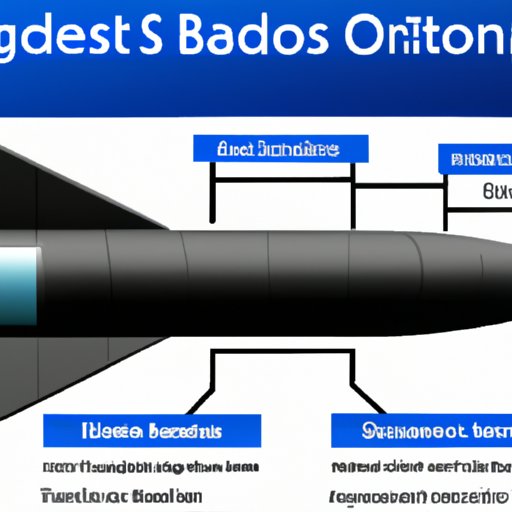Introduction
Hypersonic technology is an emerging field that has the potential to revolutionize the aerospace, military and commercial industries. This article will explore what hypersonic technology is, how it works, what its potential applications are, and the advantages and disadvantages of using this technology. It will also discuss how it might impact our lives and compare it with other existing and emerging technologies.
What is Hypersonic Technology and How Does it Work?
Hypersonic technology refers to the use of vehicles that fly at speeds of Mach 5 (five times the speed of sound) or higher. These vehicles can reach these speeds by using a combination of air-breathing engines and rocket propulsion. At these high speeds, the vehicles must be able to withstand extreme temperatures and pressures, as well as manage their own aerodynamic forces.
There are two main types of hypersonic technology: scramjet and ramjet engines. Scramjet engines use supersonic combustion to burn fuel, while ramjet engines use subsonic combustion. Both types of engines require a high initial speed in order to work properly, so they are typically launched using a rocket booster. The engines then take over and propel the vehicle to its destination.

The Potential Applications of Hypersonic Technology
Hypersonic technology has the potential to revolutionize the aerospace, military and commercial industries. In the aerospace industry, hypersonic vehicles could be used for space exploration, satellite launches and intercontinental travel. In the military, hypersonic technology could enable rapid deployment of personnel and weapons, as well as intelligence gathering. In the commercial sector, hypersonic technology could be used for transportation, communication and entertainment.

Advantages and Disadvantages of Hypersonic Technology
Hypersonic technology offers many potential benefits, including increased speed, improved safety and reduced cost. For example, a hypersonic aircraft could reduce a flight from New York to London from seven hours to just two. Additionally, because hypersonic vehicles are highly maneuverable, they can be more easily controlled than traditional aircraft, making them safer to operate. Finally, using hypersonic technology could result in significant cost savings due to the reduced fuel consumption.
However, there are also some drawbacks to using hypersonic technology. For example, the extreme temperatures and pressures encountered at such high speeds can cause materials to degrade quickly, increasing maintenance costs. Additionally, hypersonic vehicles are more difficult to control than traditional aircraft, which may pose a risk to passengers and cargo. Finally, the development of hypersonic technology is expensive, and there is no guarantee that the technology will be successful.

How Hypersonic Technology Could Impact Our Lives
If hypersonic technology is successful, it could have a huge impact on our lives. For one thing, it could significantly reduce travel times, allowing us to get from one place to another much faster. Additionally, it could open up new opportunities for commerce, communication and entertainment. Finally, it could provide a platform for improved security and defense.
At the same time, there are also some potential negative effects of hypersonic technology. For example, the noise generated by hypersonic vehicles could disturb wildlife and disrupt ecosystems. Additionally, the cost of developing and operating hypersonic vehicles could make them inaccessible to most people. Finally, the use of hypersonic technology could lead to increased militarization of space, creating a potential risk to global security.
A Comparison of Hypersonic Technology with Other Technologies
Hypersonic technology is unique in that it combines the speed of rockets with the maneuverability of traditional aircraft. This makes it significantly faster than traditional aircraft, but slower and less efficient than rockets. Additionally, hypersonic technology is much more expensive to develop and operate than traditional aircraft or rockets.
When compared to emerging technologies, such as electric aircraft or autonomous drones, hypersonic technology is still in its infancy. While these technologies offer similar benefits, such as improved speed and efficiency, they are still in the early stages of development and may not be ready for widespread use in the near future.
Conclusion
In conclusion, hypersonic technology has the potential to revolutionize the aerospace, military and commercial industries. It offers many potential benefits, including increased speed, improved safety and reduced cost. However, there are also some drawbacks to using this technology, such as the extreme temperatures and pressures it encounters, as well as the difficulty in controlling the vehicles. Additionally, the development of hypersonic technology is expensive and there is no guarantee that it will be successful. Nevertheless, if hypersonic technology is successful, it could have a huge impact on our lives, providing faster travel times, new opportunities for commerce, communication and entertainment, and improved security and defense.
(Note: Is this article not meeting your expectations? Do you have knowledge or insights to share? Unlock new opportunities and expand your reach by joining our authors team. Click Registration to join us and share your expertise with our readers.)
